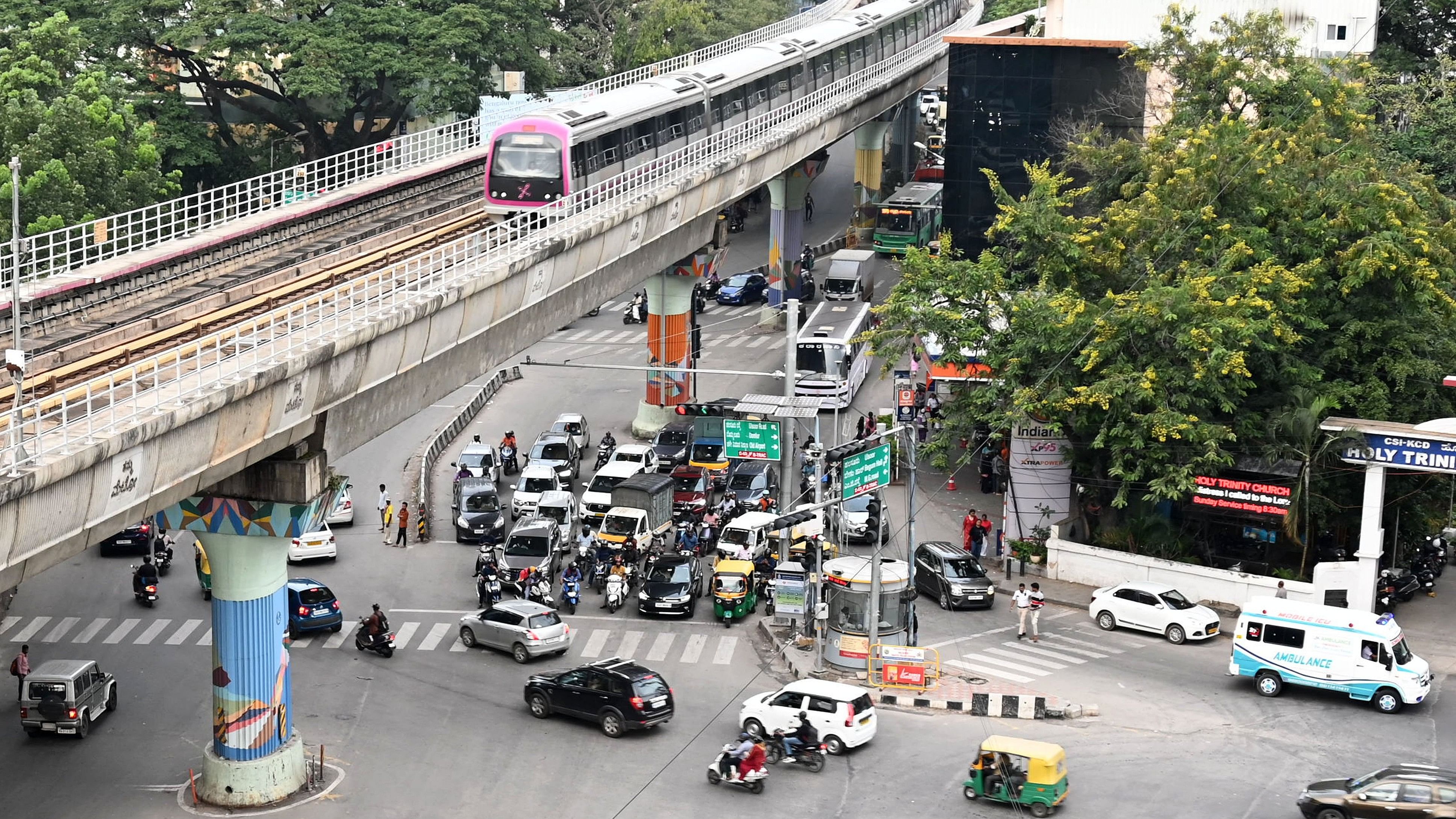
An aerial view of a jammed Trinity Junction on Tuesday.
Credit: DH PHOTO/PUSHKAR V
, , DHNS (BYLINE)
Bengaluru: Bengaluru, notorious for its peak-hour traffic, has five major junctions — Trinity, Sarakki, Goraguntepalya, Iblur and Hebbal — that experience congestion nearly 24/7 due to their critical roles in connecting key city roads, according to the Bengaluru Traffic Police (BTP).
Data from the BTP between June and August revealed that Hebbal and Goraguntepalya junctions saw continuous traffic with congestion stretching a few hundred meters even during the early hours. Trinity and Iblur reported their highest congestion during morning rush hours, while Sarakki saw a significant spike in traffic around 7 pm daily.
In June, peak-hour congestion at these junctions reached lengths of four to five kilometers, aggravated by rain and waterlogging. Though congestion slightly reduced in August, traffic remained steady even during midday (11 am to 4 pm), particularly at Hebbal, Sarakki and Goraguntepalya, with congestion lengths averaging between 2 and 3.5 kilometers.
Not the solution?
MN Anucheth, Joint Commissioner of Police (Traffic), recently remarked that AI signals have “failed” to alleviate traffic during peak hours. Given the current conditions, he indicated that AI signals might not significantly help during off-peak hours either.
Trinity Junction employs MODERATO smart signals, but they remain largely ineffective during the day as they cannot detect unanticipated VIP or ambulance movement. As a result, these signals are only used from midnight to 6 am, while manual adjustments are made during the day.
Sarakki Junction features the traffic police’s Adaptive Traffic Control System (ATCS) signals, but often operates in manual mode, according to DCP Shiva Prakash Devaraju (Traffic, South).
The other three junctions rely on fixed-time signals with seven phases, which contribute to extended wait times.
Iblur Junction, connecting HSR Layout, Sarjapur Road and Outer Ring Road, sees a high volume of traffic that may not respond well to AI-based solutions, Devaraju added.
Hebbal and Goraguntepalya are considered “highly unpredictable”, says DCP Siri Gowri (Traffic, North). “Once the metro work at Hebbal is completed, we may explore AI-based signals there,” she noted.
ATCS expansion
Traffic top cop MN Anucheth told DH about the plans of expanding ATCS signals to these congested junctions. While AI signals could theoretically optimise signal timings, such a solution has yet to be fully tested at these sites, he added.